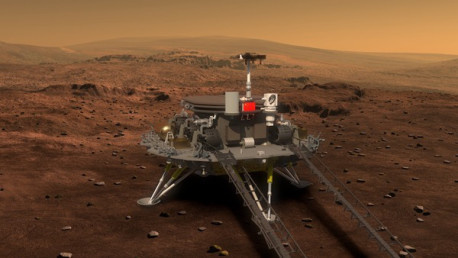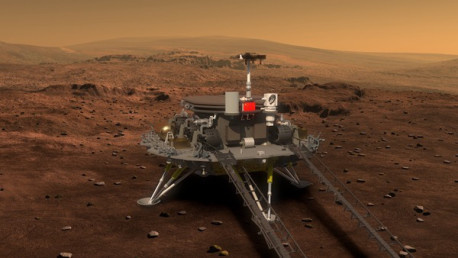By Fu Wen, Liu Junguo from People’s Daily

China will send a spacecraft to orbit Mars, make a landing, and deploy a rover in July or August 2020, Wan Weixing, an academician at the Chinese Academy of Sciences, told the People’s Daily on Monday.
The lander will tough down the northern hemisphere of Mars where the rover will explore the surface after a journey of around seven months, and send the collected data back in 2021, said Wan, also chief scientist of China's Mars exploration program.
The designed life expectancy of the probe is one Martian year, or nearly two years on Earth, he disclosed when reviewing the government work report at the ongoing “two sessions”, namely the annual meetings of the National People’s Congress and the Chinese People's Political Consultative Conference.
The task is now proceeding smoothly, the chief scientist said, explaining that feasibility studies, scientific goals, basic working plans have been completed before the mission plan was officially approved in early 2016.
So far, preparation works on satellite probes, ground data application, rocket launches, monitoring and control systems have been started, and some solutions have been primarily confirmed after initial design, optimization and rounds of tests, he continued.
China's first Mars mission is poised to achieve breakthroughs in key technologies like orbiting, landing and deploying a rover.
The mission plans to, by making an all-round exploration and high-precision scientific probes in limited area, study the inner structure, surface, atmosphere, and ambient space environment of the red planet, and as a result give insight into the origin and evolution of the solar system, information about extraterrestrial life and other big scientific challenges.
Mars is always the human being’s first destination chosen for deep-space exploration, with a shorter distance to Earth than its peers in solar system, shares similar national environment with the plant the human beings are now living.
The orbits of Earth and Mars only align for an optimal launch every 26 months, and the window only lasts a few weeks, which means that there are only three launch windows before the arrival of the expected timetable of 2020.
Photo taken shows the concept portraying what the Mars rover and lander would look like. (Photo source: clep.org.cn)
The lander will tough down the northern hemisphere of Mars where the rover will explore the surface after a journey of around seven months, and send the collected data back in 2021, said Wan, also chief scientist of China's Mars exploration program.
The designed life expectancy of the probe is one Martian year, or nearly two years on Earth, he disclosed when reviewing the government work report at the ongoing “two sessions”, namely the annual meetings of the National People’s Congress and the Chinese People's Political Consultative Conference.
The task is now proceeding smoothly, the chief scientist said, explaining that feasibility studies, scientific goals, basic working plans have been completed before the mission plan was officially approved in early 2016.
So far, preparation works on satellite probes, ground data application, rocket launches, monitoring and control systems have been started, and some solutions have been primarily confirmed after initial design, optimization and rounds of tests, he continued.
China's first Mars mission is poised to achieve breakthroughs in key technologies like orbiting, landing and deploying a rover.
The mission plans to, by making an all-round exploration and high-precision scientific probes in limited area, study the inner structure, surface, atmosphere, and ambient space environment of the red planet, and as a result give insight into the origin and evolution of the solar system, information about extraterrestrial life and other big scientific challenges.
Mars is always the human being’s first destination chosen for deep-space exploration, with a shorter distance to Earth than its peers in solar system, shares similar national environment with the plant the human beings are now living.
The orbits of Earth and Mars only align for an optimal launch every 26 months, and the window only lasts a few weeks, which means that there are only three launch windows before the arrival of the expected timetable of 2020.
Photo taken shows the concept portraying what the Mars rover and lander would look like. (Photo source: clep.org.cn)
 Menu
Menu
 China to send Mars probe into space in 2020
China to send Mars probe into space in 2020
















